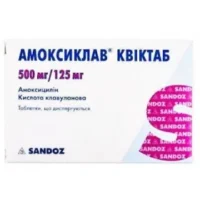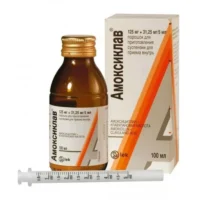Description
Flaprox (Ciprofloxacin) Coated Tablets 500 mg. №10
Ingredients:
Each tablet contains 500 mg of ciprofloxacin.
Mechanism of Action:
Ciprofloxacin, the active ingredient in Flaprox, inhibits bacterial DNA gyrase and topoisomerase IV enzymes, leading to the disruption of DNA replication, transcription, and repair processes in susceptible bacteria. This action results in bacterial cell death.
Pharmacological Properties:
Ciprofloxacin exhibits bactericidal activity by interfering with the essential enzymes involved in bacterial DNA processes. It has a broad spectrum of antimicrobial activity against both Gram-positive and Gram-negative bacteria.
Indications for Use:
Flaprox (ciprofloxacin) is indicated for the treatment of various bacterial infections, including urinary tract infections, respiratory tract infections, skin and soft tissue infections, and bone infections caused by susceptible pathogens.
Contraindications:
Do not use Flaprox if you have a history of hypersensitivity to ciprofloxacin, other quinolones, or any component of the formulation. Avoid use in patients with a known history of tendon disorders related to fluoroquinolone use.
Side Effects:
Common side effects of Flaprox may include gastrointestinal disturbances, headache, dizziness, and skin reactions. Rare but serious adverse effects may include tendon rupture, central nervous system effects, and hypersensitivity reactions.
Usage Instructions:
The recommended dosage of Flaprox is one 500 mg tablet taken orally twice daily. Tablets should be swallowed whole with a full glass of water, and it is advised not to crush or chew the tablets.
Benefits Compared to Analogues:
Flaprox offers the advantage of a broad spectrum of antibacterial activity, high bioavailability, and proven efficacy in treating various bacterial infections. Its convenient dosing regimen and well-established safety profile make it a preferred choice in clinical practice.
Suitable Patient Groups:
Flaprox can be used in adult patients, including the elderly, for the treatment of bacterial infections. Dosage adjustments may be necessary in patients with renal impairment. It is not recommended for use in children and adolescents due to potential adverse effects on musculoskeletal development.
Storage and Shelf Life:
Store Flaprox tablets in a cool, dry place away from direct sunlight. Keep the medication out of reach of children. Check the expiration date on the packaging and do not use the tablets beyond the stated shelf life.
Packaging Description:
Flaprox tablets are supplied in blister packs containing 10 coated tablets. The packaging is designed to protect the tablets from moisture and ensure their stability during storage.
Scientific Evidence:
Clinical studies have demonstrated the efficacy of ciprofloxacin in treating various bacterial infections, including complicated urinary tract infections, respiratory tract infections, and skin infections. The broad-spectrum activity and favorable pharmacokinetic profile of ciprofloxacin contribute to its clinical success.
Additional Information:
Patients should complete the full prescribed course of Flaprox to ensure effective treatment and reduce the risk of antibiotic resistance. If persistent or severe adverse reactions such as diarrhea, abdominal pain, or signs of allergic reactions occur, medical attention should be sought promptly.





